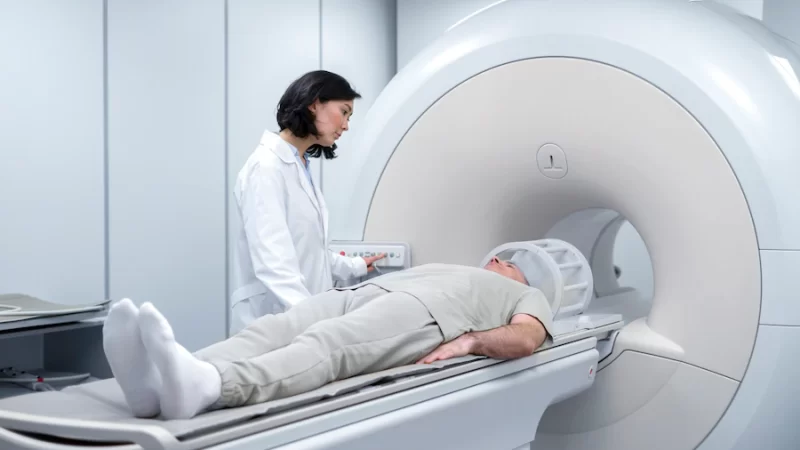Eye Cancer – Types, Causes, Symptoms, and Diagnosis

Eye cancer is a gathering of malignant growth cells. These cells are non-typical cells that develop rapidly and can spread to different parts of the body, attacking and destroying tissues. Malignant growth in the eye can influence the external structure of the eye such as the eyelid, which comprises of muscles, skin and nerves. On the off chance that the malignant growth begins inside the eyeball it is called intraocular disease. The most well- known intraocular malignant growths in adults are melanoma and lymphoma while in children, it is retinoblastoma, which forms in the cells of the retina. Malignancy may spread to the eye from different organs of the body as well.
Therapy for eye malignant growth depends on the type and stage. It might incorporate a medical procedure, radiation treatment, freezing or heat treatment, or laser treatment.
Types of eye cancer
Ocular melanoma: The most widely recognized malignancy that forms in the eyes of adults is melanoma, otherwise called ocular melanoma. It is a malignant growth that forms in the cells that make that pigment which gives your skin, hair and eyes colour. Similarly, just like you can get a melanoma on your skin, you can get it in your eye as well. Rare in itself, it is the most common eye cancer in adults.
Primary intraocular lymphoma: Primary intraocular lymphoma (lymphoma of the eye) is a malignant growth that occurs in the body’s white cells (lymphocytes). Lymphomas can occur in organs like lungs, stomach, and once in a while, in the eyes. Lymphoma of the eye is called non-Hodgkin’s B cell lymphoma.
A large number of people diagnosed with eye lymphoma tend to be older or have issues that impact the immune framework such as AIDS. Lymphoma of the eye may be accompanied by Primary Central Nervous System Lymphoma (PCNSL), which is lymphoma of the brain.
Retinoblastoma: This malignant growth occurs in young children. Caused by genetic mutation, it starts in the retina. In this, retina nerve cells begin to increase. If left untreated, they may spread from the eye to different parts of the body.
Causes of eye cancer
Though the specific reason for eye malignancy has not yet been found, studies show that some auxiliary eye malignancies can originate as a result of various types of malignant growth. The various factors that may be liable for the advancement of harmful malignant cells in and around the eyes are:
- Age & gender: Malignancy of the eye is more usual in men than in women, and even though it can occur at any stage in life, your danger of developing eye malignancy may increase with age.
- Eye colour: Compared to people with dark eyes (iris colour), people with lighter eyes are at a higher risk of getting uveal melanoma (cancer of the iris).
- Inherited medical conditions: Conditions like dysplastic nevus disorder
(numerous acquired melanomas), oculodermal melanocytosis or nevus of Ota (strange earthly-coloured spots on the uvea layering your iris), or BAP1 cancer syndrome are common factors for eye malignant growth. - Moles: Various kinds of moles (nevi) in the eye or on the skin have been associated with an increased danger of uveal eye melanoma.
- White or pale skin: The risk of getting eye cancer increases for people who have fairer complexion as compared to people with a darker complexion.
- Overexposure to sunlight: Studies show that overexposure to sunlight increases the risk of getting skin cancer, also building up chances of getting eye cancer.
- Certain genetic mutations: Hereditary transfer of genes from parents to children also builds up the chances of eye malignancy.
Signs & symptoms of eye cancer
By and large, the eye malignant growth doesn’t show initial symptoms and may go unrecognised. Nonetheless, on the off chance that you experience any of the underneath signs and symptoms, take advice from your ophthalmologist right away:
- Eye floaters or eye flashes
- Blurring of vision
- Seeing halos & shadows around pictures, especially including bright lights
- Getting a white mole on the white part of the eye which expands in size with ‘angry’ looking blood vessels around it which bleed
- Facing trouble in looking at things accompanied with pain
- Bulging sensation in one or both the eyes
- Development of a lump or tumour in the eyelid or inside the eye, which expands in size & develops blood vessels
- Experiencing change in colour of the iris
In children, some additional signs & symptoms may be as follows: Development of a white coloured pigment in the Centre of the eye
- Experiencing that both eyes are going in different directions while looking at things
- Experiencing redness or swelling in the eye
- Getting excessive tears
Diagnosis
Your specialist will check your vision get some information about your symptoms and the manner in which your eyes move. They may use a light and an amplifying magnifying glass to search for indications of a tumour in the eye. On the off chance that you may have eye malignant growth, they might need to use imaging filters like ultrasound or MRI to get a more detailed result. What is more, they might suggest a biopsy in which a small amount of tissue is taken from the eye and is inspected under a magnifying instrument to check for malignant growth.
Depending on the results, your specialist will suggest a method to eliminate the cancerous growth. It may be surgery, radiation therapy or laser therapy.
Final steps
If you are experiencing any symptoms of eye cancer or need further assistance, book an appointment at Yashoda Hospital & Research Centre, Nehru Nagar, Ghaziabad. Here, we have experienced ophthalmologists who make you comfortable with the procedure. Our experts in this field include:
Dr. Arpit Pavaiya: Dr. Pavaiya is known for his insightful medical treatment approach for cataract surgeries, glaucoma & cataract and has performed more than 6000 cataract surgeries, thereby helping people to restore their vision and lead a happy life. He also possesses vast experience in diagnosing various rare disorders of the eye.
Dr. (Brig.) Arvind Kumar Tyagi: Dr. Tyagi received his fellowship and training in surgical oncology from the Tata Memorial Hospital, Mumbai. He has had an exceptional career in the armed forces where he served for almost 30 years. An expert in all types of cancer surgeries, he has created more than 30,000 happy stories till date.




